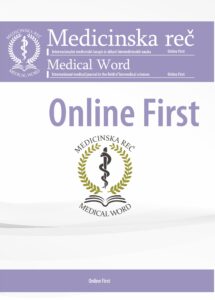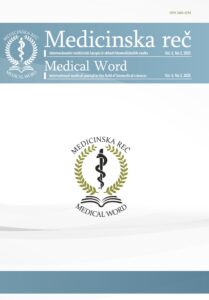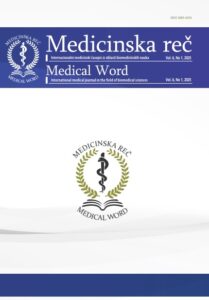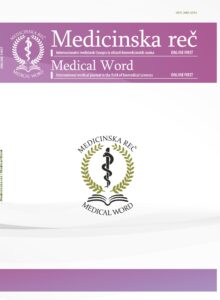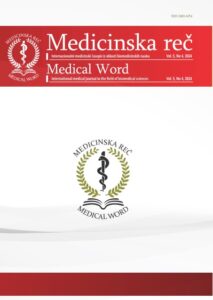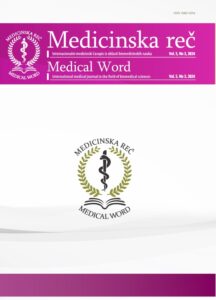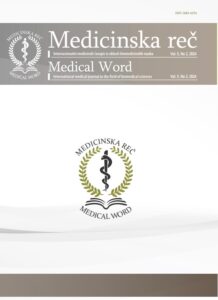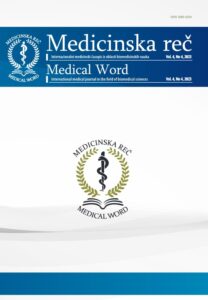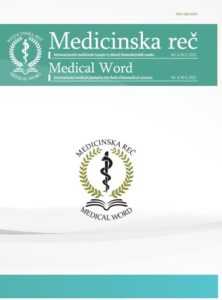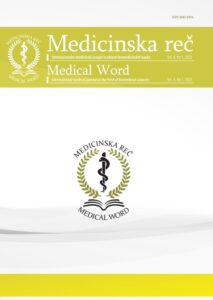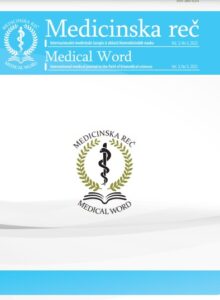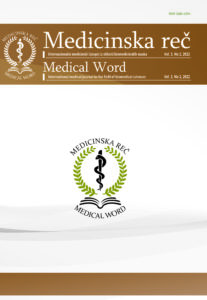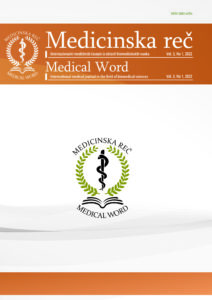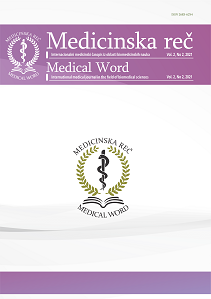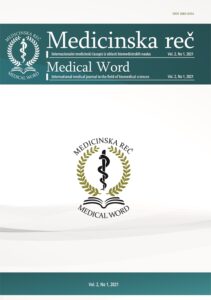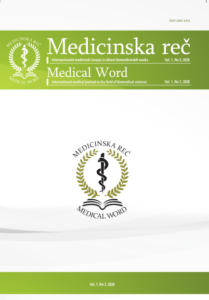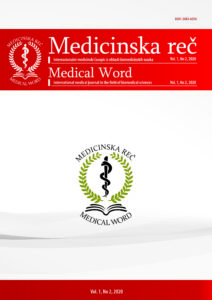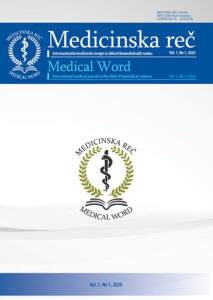Rana ortodontska terapija
Prikaz slučaja
Irena Đ. Kukolj, Tanja Ivanović, Dragan Ivanović, Mirjana Ragaj, Vojislav Milosavljević, Katarina Nedić
138–143
https://doi.org/10.5937/medrec2404138K
Apstrakt
Ranim ortodontskim tretmanom smatra se lečenje koje počinje i završava se pre nego što niknu svi stalni zubi tj. sprovodi se u periodu mlečne i mešovite denticije. Sinonimi ranog tretmana su: preventivni ortodontski tretman, interceptivni ortodontski tretman ili prva faza sveobuhvatnog tretmana. Cilj rada je razmotriti prednosti i nedostatke rane ortodontske terapije. Potrebno je sprovesti terapiju koja će dovesti do željene estetike lica, povećati samopouzdanje deteta, zadovoljstvo roditelja, omogućiti jednostavniju terapiju u budućnosti, bolji i stabilniji rezultat, omogućiti pravilno obavljanje orofacijalnih funkcija, postizanje više mogućnosti za modifikaciju skeletnog rasta i smanjiti potencijalna jatrogena oštećenja. Na osnovu opsežne dijagnostičke procedure, koja obuhata: anamnezu, klinički pregled, funkcionalnu analizu, radiografisanje i fotografisanje pacijenta i analizu studijskih modela, donosimo plan terapije. Prikaz slučaja je devojčica starosti 9 godina i 3 meseca. Rani tretman je potrebno sprovoditi samo kod dece kod koje postoji definitivna potreba za lečenjem. Grupi sa ograničenom potrebom treba dati vremena za spontanu korekciju.
Ključne reči: skeletni rast, interceptivni ortodontski tretman, jatrogena oštećenja, AOA (aktivni ortodontski aparati)
Literatura
- Evangelista K, Ferrari-Piloni C, Barros LAN, et al. Three-dimensional assessment of craniofacial asymmetry in children with transverse maxillary deficiency after rapid maxillary expansion: A prospective study. Orthod Craniofac Res 2020;23(3):300-12.
- Caroccia F, Moscagiuri F, Falconio L, Festa F, D’Attilio M. Early Orthodontic Treatments of Unilateral Posterior Crossbite: A Systematic Review. J Clin Med 2020;10(1):33.
- Han Y, Lan L, Liu Y. Influencing factors of the curative effect of maxillary molar distalization. Front Med Sci Res 2023:5(9):66-70.
- Paglia L. Interceptive orthodontics: awareness and prevention is the first cure. Eur J Paediatr Dent 2023;24(1):5.
- Bishara SE, Justus R, Graber TM. Proceedings of the workshop discussions on early treatment. Am J Orthod Dentofacial Orthop 1998; 113:5-6.
- Väkiparta MK, Kerosuo HM, Nyström ME, Heikinheimo KA. Orthodontic treatment need from eight to 12 years of age in an early treatment oriented public health care system: a prospective study. Angle Orthod 2005;75(3):344-9.
- Tulloch JF, Phillips C, Proffit WR. Benefit of early Class II treatment: progress report of a two-phase randomized clinical trial. Am J Orthod Dentofacial Orthop 1998;113(1):62-72, quiz 73-4.
- Ghafari J, Shofer FS, Jacobsson-Hunt U, Markowitz DL, Laster LL. Headgear versus function regulator in the early treatment of Class II, division 1 malocclusion: a randomized clinical trial. Am J Orthod Dentofacial Orthop 1998;113(1):51-61.
- Keeling SD, Wheeler TT, King GJ, et al. Anteroposterior skeletal and dental changes after early Class II treatment with bionators and headgear. Am J Orthod Dentofacial Orthop 1998;113(1):40-50.
- Toffol LD, Pavoni C, Baccetti T, Franchi L, Cozza P. Orthopedic treatment outcomes in Class III malocclusion. A systematic review. Angle Orthod 2008;78(3):561-73.
- Petrén S, Bondemark L, Söderfeldt B. A systematic review concerning early orthodontic treatment of unilateral posterior crossbite. Angle Orthod 2003;73(5):588-96.
- Cozza P, Mucedero M, Baccetti T, Franchi L. Early orthodontic treatment of skeletal open-bite malocclusion: a systematic review. Angle Orthod 2005;75(5):707-13.
- Lopes Filho H, Maia LH, Lau TC, de Souza MM, Maia LC. Early vs late orthodontic treatment of tooth crowding by first premolar extraction: A systematic review. Angle Orthod 2015;85(3):510-7


